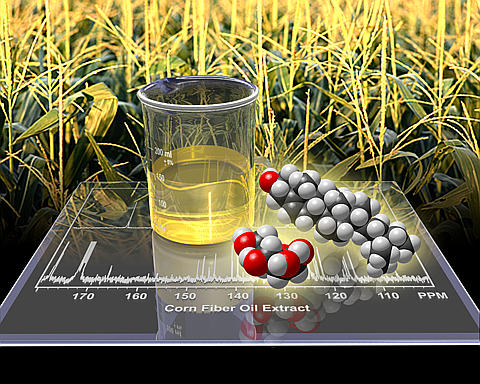Changing the Game in Biomass Conversion
by Corinne Drennan

Bioenergy has been used since the first controlled fires, thought to be early in the Acheulean occupation, about 1 million years ago. Since then, we've learned how to transform inedibles into delicacies, generate electrons, harness microbial powerhouses, and even convert lignin and carbohydrates to hydrocarbons. How then does one make a "game-changing" technological advancement or shift a paradigm today, in the midst of these (and other) empirically driven successes?
Let's revisit conversion of biomass to hydrocarbons. Is it enough to arrive at a carbon-to-hydrogen ratio of n to n (aromatics)? Or even better perhaps, n to 2n+2 (paraffins)? Today's work in biofuels targets complex mixtures with performance properties for stability, lubricity, fluidity, volatility, non-corrosivity; mixtures that can function as hydraulic fluid in engine control systems or coolant for fuel system components, in addition to providing a source of energy. A bit over the top, you ask? This is no more than what we require of today's aviation fuels. Getting to this target from biomass could take another millennia to accomplish without a grasp of the scientific underpinnings at play during conversion and without the powerful computational tools currently available.
What is the challenge? Equations of state such as Soave-Redlich-Kwong and Peng-Robinson work well for petroleum and gas, but they simply don't represent the gas-liquid equilibria for the wide varieties of oxygenates, organic acids, phenolics, or alcohols found in bio-oils from fast pyrolysis or hydrothermal liquefaction. Additional, new constitutive relationships are needed for predicting conversion of biogenic precursors to hydrocarbons and informing catalyst designs. Arriving at foundational science and at algorithms for simulating catalytic sites, bio-oil mixtures, or both at the same time, requires concerted interaction between theory development and applied research.
To leverage the science base of the Institute for Integrated Catalysis at Pacific Northwest National Laboratory, researchers are defining experimental data collection strategies that will accelerate building the relevant theories. The process requires development of analytical techniques to identify specific functional groups such as "HC=O, "COOH, and "COH in a bio-oil comprising hundreds of compounds. It also requires development of a common language through which we can engage in dialogue that spans across length scales ranging from nanometers to meters and time scales from picoseconds to months. Today's "game changers" and tomorrow's paradigm will evolve from that research.
Corinne Drennan is a chemical engineer at Pacific Northwest National Laboratory whose research interests include conversion of biomass and municipal solid waste to fuels and chemicals. She has experience in applied research and technoeconomic analysis, and currently serves as PNNL's laboratory relationship manager for biomass.
References
- Berna, F., P. Goldberg, L K Horwiez, J. Brink, S. Holt, M. Bamford, M. Chazan. 2012. "Microstratigraphic evidence of in situ fire in the Acheulean Strata of Wonderwerk Cave, Northern Cape province, South Africa." PNAS. doi/10.103/pnas.1117620109.
- Chevron Aviation Fuels Technical Review, 2006.

